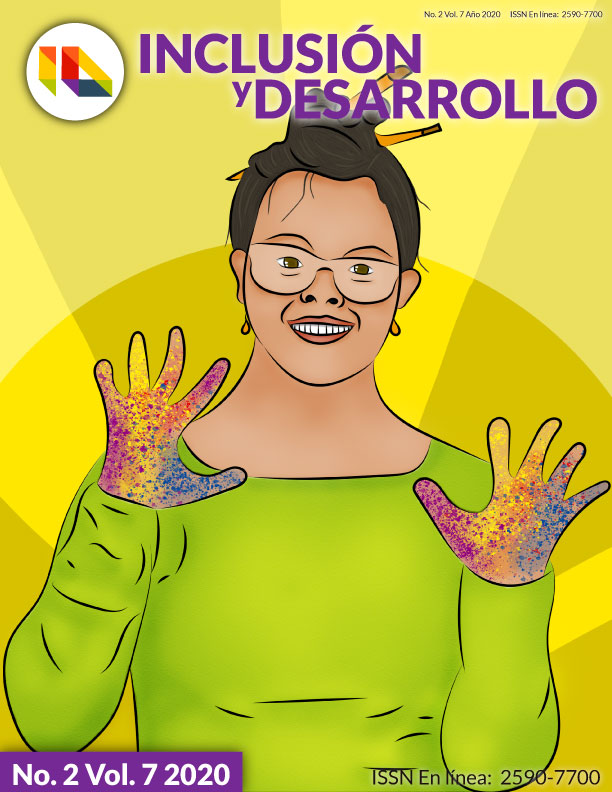Fortalecimiento de la confianza legítima institucional: una hoja de ruta en el cai la macarena de fusagasugá
Contenido principal del artículo
Resumen
El presente artículo de investigación, presenta un resumen de los resultados originales del proyecto institucional 2019, de la Escuela de Policía Provincia de Sumapaz, denominado “Fortalecimiento de la interacción comunitaria a través del liderazgo policial en Fusagasugá”, cuyo fin último es mejorar la simbiosis policía-comunidad a partir del liderazgo policial y de su interacción con el ciudadano, en el CAI La Macarena de Fusagasugá, para lo cual el diseño se consideró en tres fases y como metodología se propuso auscultar en primera instancia el Modelo Nacional de Vigilancia Comunitaria por Cuadrantes – MNVCC- para determinar los factores de liderazgo policial ausentes en esa relación. Luego en un trabajo de campo, en el CAI LA MACARENA del municipio de Fusagasugá, aplicando instrumentos metodológicos con estudiantes de la Escuela, identificar la percepción del servicio de policía y posteriormente como caso piloto, implementar las recomendaciones en el mismo lugar. Como hallazgos, se puede percibir que los resultados muestran una coincidencia genérica con las estadísticas nacionales en sentir un distanciamiento entre el policía y la comunidad, que afecta la interacción que debería ser más calidad y de confianza. No obstante, debido a que la aplicación de la encuesta fue local se pudiera pensar que no es suficiente para comparar; sin embargo, es coincidente. De ahí se concluye como alternativa para zanjar la discusión que el liderazgo policial es el arco toral para cerrar la brecha entre el policía y la comunidad y emerge como propuesta institucional la construcción de una hoja de ruta que permita validar su viabilidad.
Detalles del artículo
Sección

Esta obra está bajo una licencia internacional Creative Commons Atribución 4.0.
Cómo citar
Referencias
-Aguilar-Barojas, S. (2005). Salud en Tabasco. ISSN: 1405-2091. revista@saludtab.gob.mx Secretaría de Salud del Estado de Tabasco, México. Recuperado de: https://www.redalyc.org/pdf/487/48711206.pdf.
-Cámara de Comercio de Bogotá. (2018). Observatorio de seguridad en Bogotá. Cuadernos Observatorio de seguridad 2. Implementación y resultados del modelo nacional de vigilancia comunitaria por cuadrantes y su Impacto en la seguridad de Bogotá. (2010-2014).
- Cámara de Comercio de Bogotá. (2018). Encuesta de Percepción y Victimización en Bogotá. Primer semestre de 2018.
-López, Y. (2012). Relato Policial Modelo de Vigilancia Comunitaria en Colombia. Recuperado de: https://www.academia.edu/12049940/Modelo_de_Vigilancia_Comunitaria_en_Colombia.
-Martín, m., & Torrente, D. (2016). La reforma de la policía en Europa: Desafíos, debates y alternativas. Desafíos, 28(2): 113-144. Doi: http://dx.doi.org/10.12804/desafios28.2.2016.03. Ministerio de Defensa (2010). Política de Seguridad y Convivencia. Recuperado de: https:www.mindefensa. gov.co/irj/go/km/docs/Mindefensa/Documentos/descargas
-Oficina de las Naciones Unidas contra la Droga y el Delito (2010). Seguridad pública y prestación de servicios policiales. Recuperado de https://www.unodc.org/documents/justice-and-prison-reform/ crimeprevention/Public_Safety_and_Police_Service_Delivery_Spanish.pdf.
-Páez, C. A., Peón, I. E., & Ramírez, Y. (2018, octubre-diciembre). Contexto de la seguridad ciudadana en América Latina y el Caribe: revisión de literatura (2007-2017). Rev. Cient. Gen. José María Córdova, 16 (24), 83-106 DOI: http://dx.doi.org/10.21830/19006586.360.
-Paz Marulanda, B. (2009). El policía, líder de la comunidad para el logro de la convivencia y seguridad ciudadana. Chía: Universidad de la Sabana. Recuperado de:https://intellectum.unisabana.edu. co/bitstream/handle/10818/1393/Abraham%20Paz%20Marulanda.pdf?sequence=1.
-Policía Nacional. (2018). Conozca el liderazgo holístico policial. Recuperado de: https://www. policia.gov.co/noticia/conozca-liderazgo-holistico-policial.
-Policía Nacional. (2013). Actualización Tomo 2.2 Modelo Nacional de Vigilancia Comunitaria por Cuadrantes. Bogotá: Imprenta Nacional.
-Policía Nacional. (2009). Resolución No. 00912 “Por la cual se expide el Reglamento del Servicio de Policía”. Policía Nacional. (2009). Modelo holístico de liderazgo policial. Revista LOGOS CIENCIA & TECNOLOGÍA Artículo de investigación Estudio de caso. ISSN 2145–549X | ISSN 2422-4200 - Vol. 10, No. 2, abril – junio 2018.
-Sanabria, F.(2009). Fundamentos socio-culturales para el trabajo entre policía y comunidad.





